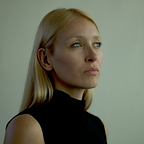Biomimetic Museums (intro)
This article is the introduction of a series of articles that will present approaches for museums to get inspired by Nature.
Between Technophilia and Biophilia
We live today in a society that it as much technophile than biophilic. People are as driven by technological innovations than by creating a symbiosis environment with Nature. We become more aware of the necessity to create a sustainable way of living and understand that we cannot anymore, as a species, produce matter that cannot be upcycled by the ecosystem. If we want the Anthropocene era not to be the last one for humans on this planet, we should stop transforming it but start respecting it and learning from it. It is time to start opening our eyes on what 3,8 billion of Life on Earth can teach us.
In a near future, the way we create and use our cities, our food, our clothes, the way we work and connect, the way we learn and share, will be deeply inspired and rooted in both Nature and Technology.
Innovations, mindsets, organizations inspired by Nature are part of this new design discipline called “Biomimicry” by Janine Benyus (check her book: “Biomimicry — Innovation Inspired by Nature”). Motivated by lectures and discussions with the team from the Biomimicry Academy, which just opened in Berlin, I understood that museums and their future could get inspired by Nature too.
A brief understanding of Biomimicry
Like Janine Benyus said, “Biomimicry is the technology of biology”. It is a creative approach that emulates Life to produce smarter designs and establish sustainable ecosystems.
bi•o•mim•ic•ry is learning from and then emulating natural forms, processes, and ecosystems to create more sustainable designs.
There are three ways for us to get inspired by Nature and evolve more smartly. The industry got inspired by the form of Nature like the Japanese Shinkansen “bullet trains” that takes its conic nose from the kingfisher (+) or the shape of shark’s skin which provide bacteria to adhere (+). However, Biomimicry will also show you how the process behind the humidity-sensitivity of a pine cone already inspired building architecture (+) or the water-management systems behind spider, fungi or plant can inspire urban food producers (+).
What makes the difference in the Biomimicry approach compared to other bio-inspired institutes is the three components that enrich it. In Biomimicry, bioinspiration is not applied only to the design of things and organizations, but also to the vital aspect of the sustainability of the solutions found. Biomimicry will not suggest a solution that is not fully-respecting Nature’s rules.
The philosophy behind Biomimicry goes beyond technology. It provides a new way of looking at everything around us — During an interview with Abdeljalil Karam (former project lead at Biomimicry Germany, and Co-Founder of Xibit.), he reminded me this excellent metaphor, effective in its simplicity and relevance:
Imagine that the effects of climate change make your city polar, you find yourself in a library and are desperate to get warm. The state of mind in which our society currently operates will push you to burn all books, one after the other. We destroy or transform with drastic systems to achieve our goal. The same situation experienced with a way of thinking inspired by Nature will push you to read the books and find solutions to create warmth.
Nature is the oldest, most significant and most efficient and sustainable R&D Lab, and it is time to look at it for everything that we do.
Applying Biomimicry to Museums’ Architecture?
We see Biomimicry being applied to different disciplines like product design, fashion, robotics, but it is in architecture that we see the most examples, and that is not new! Art Nouveau architects and furniture designers like Gaudi, Guimard or Gallé already observed Nature and produced from it. The architect Frank Lloyd Wright adopted the concept of osmosis in its buildings to make them being fully-integrated into its environment.
Whether through their forms, their vernacularity or their sustainability, museums become places of experimentation for Bioarchitecture:
Zoma Contemporary Art Center (ZCAC), Ethiopia (+)
A fabulous example of vernacular architecture, the museum is an environmentally conscious art centre made of mud, straw, stone, wood and cement.
I felt strongly [about building] a large museum with huge garden where city dwellers can be connected to nature,” says Assegued, who is the museum’s director as well as an anthropologist.
Thread Cultural Center, Senegal (+)
The architecture of this social and cultural centre is a mix of innovative design and traditional techniques from the villages of the region of Tambacounda using bamboo, brick, and thatch. The architectures found ingenious ways to collect the rain to provide new agricultural opportunities for the villages around but also keep the space livable.
“Minna no Mori” Media Cosmos in Gifu, Japan (+)
As light is at the heart of the library and museum’s challenges, I found this example very inspiring. The Minna no Mori library uses translucency, diffuse daylight and circular air to provide a comfortable experience to the visitors and reducing consumption of energy by 50%.
Also, a wide range of examples of museums’ architecture inspired by the shape of Nature:
In my next articles, I will detail how museums today can be transformed by bioinspired mindsets, ecosystems and organizations with the introduction of models I have been working on lately.
The Centre Pompidou exhibition “Designing the Living”, a meetup organized by the Biomimicry Academy, and other great discussions with passionate biomimicry experts inspired this series of article.
